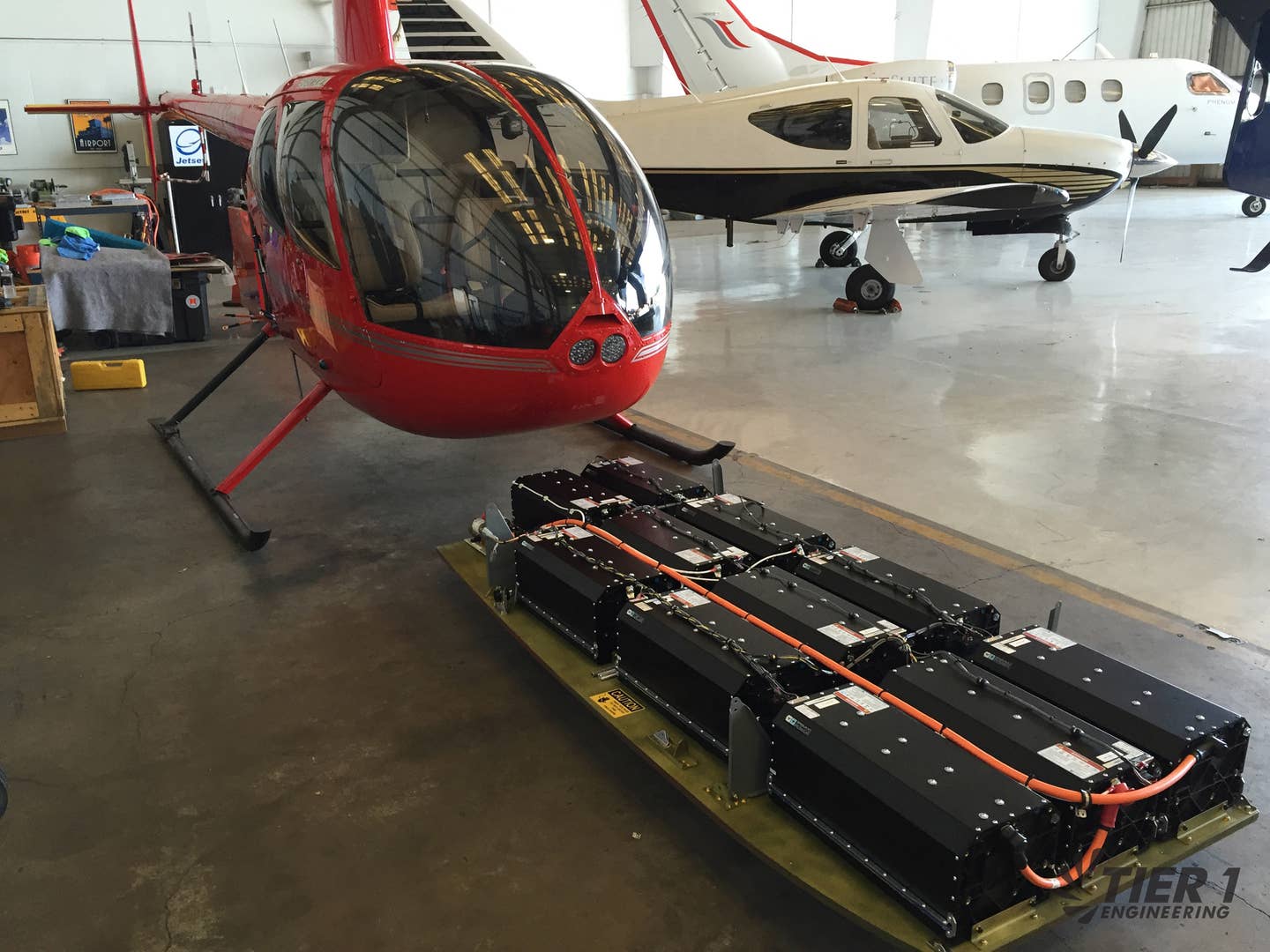Are Electric Flights Anything More than Stunts?
Another week, another electric plane making a first flight. Is it news or something else?

Recently an all-electric Robinson R-44 helicopter made a flight from Jackie Cochran Regional Airport in Thermal, California, to nearby Palm Springs, a trip that covered just over 20 miles, making it less than half the distance as a flight that qualifies as a cross-country. It was a hop. The same helicopter, being modified by Tier One Engineering, made its first flight in June. The helicopter can be charged in about an hour or have its batteries swapped out for charged ones reporting in a fourth of that time. The batteries are huge, as you can see in this photo, and Tier One has achieved a 35-mile flight under controlled circumstances. The company is positioning the product, which is still under development and not yet undergoing the FAA certification process, as an intra-city organ transplant vehicle, a mission that we haven't heard was a high priority for electric aircraft. As modified, the normally four-seat Robinson R-44 seats just the pilot, with room, we presume, for a small cooler chest.
I'm reluctant to use the word "stunt" to describe even high-profile flights, though I did use it to discuss the Red Bull Plane Swap fiasco, the Trevor Jacob "engine failure" cluster and a few others. Despite my reticence at categorizing anything in this way, the term repeatedly springs to mind when I read about flights of electric-powered aircraft.
But are they stunts? By definition, a stunt is an action that is undertaken for the visibility and notoriety rather than for more meaningful reasons, such as scientific advancement or development of technology. Dropping a bowling ball off of a high bridge onto a trampoline is a stunt. Building an aircraft with a new wing configuration isn't, even if it's not successful.
So, aren't flight programs to retrofit existing aircraft, like the Robinson R-44 powered by batteries and electric motors, research and development pure and true?
I don't think so, and here's why they're not. The quandary I have isn't with the development of electric tech; it might very well be the future, at some point. But let's face facts. The current state of the battery art is insufficient to realistically support any but the most restricted missions. Short training flights, as demonstrated by Pipistrel, now owned by Textron Aviation, are the sole practical example so far of a useful electric airplane system, and even that one is living on the ragged edge of practicality.
And every electric aircraft development company that is honest with the public says up front that what they really need are better batteries. The energy density of today's batteries, even the most exotic of them, is miniscule compared with the energy stored in fossil fuel. Electric aircraft take a hit on almost every element of use. They have less payload, can operate at high power only briefly without draining the batteries at light speed, they weigh more and can go a lot less far (range) and for a far less time (endurance).
What these companies are apparently trying to show is that they'll be ready to make electric versions of aircraft once battery tech has advanced to the point where it is more useful.
The problem is, we already knew that. So, the development of an electric-powered helicopter that turns it from a four seater that can go hundreds of miles at high speed to a single seater that can fly for a half hour at reduced power isn't showing anyone anything. It's just their 15 minutes of fame. Which is only slightly less time than one of these craft can fly.

Subscribe to Our Newsletter
Get the latest Plane & Pilot Magazine stories delivered directly to your inbox






